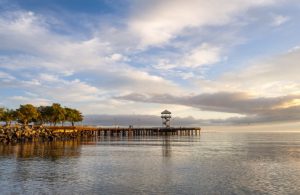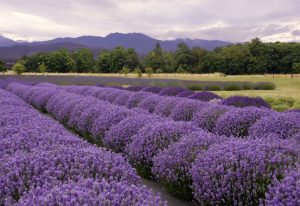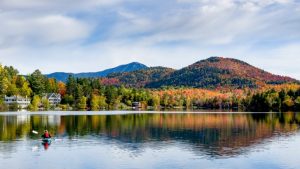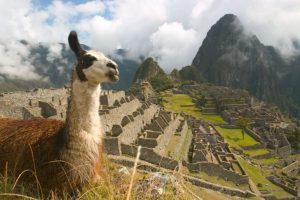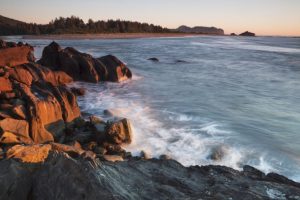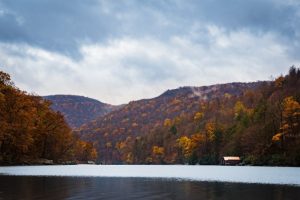 Washington : Safety by City
Washington : Safety by City
- Anacortes
- Bainbridge Island
- Bellevue
- Diablo
- Forks
- Gig Harbor
- Kennewick
- Kent
- Kettle Falls
- Longview
- Mercer Island
- Moses Lake
- Neah Bay
- Ocean Shores
- Olympia
- Port Angeles
- Port Townsend
- Poulsbo
- Pullman
- Quinault
- Renton
- San Juan Islands
- Seabrook
- Seattle
- Sequim
- Snoqualmie
- Spokane
- Spokane Valley
- Tacoma
- Walla Walla
- Wenatchee
- Westport
- Yakima
Quinault, Washington, is a captivating destination with rich natural and cultural significance.
Located on the southwestern edge of the Olympic Peninsula, it encompasses diverse territories, including the scenic Quinault Lake, the lush Quinault Rainforest, and the Quinault Reservation.
Quinault Lake, often considered the crown jewel of the area, is a glacier-carved lake surrounded by dense forests and steeped in tranquility.
The Quinault Rainforest, part of the Olympic National Park, is one of the few temperate rainforests in the world, known for its immense Sitka spruce and western hemlock trees, moss-draped branches, and abundant rainfall.
The Quinault Indian Nation, a sovereign tribe, has lived in the region for millennia.
The reservation spans parts of Grays Harbor and Jefferson counties, and the Quinault people maintain their cultural traditions, fishing rights, and a deep connection to the land.
Settlers explored the area in the late 19th century, but it has remained relatively untouched, preserving its pristine beauty.
Even the famed Highway 101 sweeps around the eastern edge of the tribal land.
The area between Moclips to the south and Kalaloch to the north is mostly the Quinault Reservation.
Visitors flock to Quinault for its breathtaking scenery and outdoor activities.
Hiking through the rainforest, fishing in the lake, or simply relaxing at the historic lodge, travelers find a haven of peace and natural splendor.
Warnings & Dangers in Quinault

OVERALL RISK: LOW
There’s a low risk with any location that has Quinault in the name. You will need to know some weather and geographic-specific risks, which we’ll detail in this article.

TRANSPORT & TAXIS RISK: LOW
Public transportation in Quinault is limited. Grays Harbor Transit does have at least one Quinault route. The area is best accessed by car, as taxi and rideshare costs would add up quickly, and mobile service will be limited. Visitors typically drive from nearby towns or major cities. Some private shuttle services and tour operators offer transportation to the region, but options are sparse.

PICKPOCKETS RISK: LOW
The risk is low, but that’s assuming you’re taking standard protections with your belongings. You also need to watch out for a bear or other wild animal stealing your bag due to improperly stored food or personal hygiene items. Use bear-proof containers for everything.

NATURAL DISASTERS RISK: MEDIUM
Quinault faces a medium risk, mostly for earthquakes and tsunamis, due to its proximity to the Cascadia Subduction Zone and potential landslides from heavy rainfall. Wildfires, though less common in the rainforest, can still occur during dry periods. Flooding is also a concern due to the region's high annual precipitation.

MUGGING RISK: LOW
This is a low risk, but yet another example of an area where you can’t afford to let your guard down. Even places with low crime rates can have crimes of opportunity happen.

TERRORISM RISK: LOW
Another low risk here, as the region is remote, isolated, and wild. Weather is by far a bigger risk. However, if you see suspicious activity, please report it to the law enforcement agency that oversees the section of Quinault you are visiting.

SCAMS RISK: LOW
The police department and local sheriff’s office will post the latest scams on social media. Check the fraud section of each department’s website for more information and to learn about common tactics. The risk here is low, but keep it that way by staying informed.

WOMEN TRAVELERS RISK: LOW
Yet another low risk, with plenty of places to visit that are family-friendly or welcoming for women of all generations. While it’s recommended that you always travel in a group of three, you’ll find hiking groups are welcoming to solo travelers who want to tag along for safety.

TAP WATER RISK: LOW
The U.S. has strict standards for tap water per the Safe Water Drinking Act. Communities are required to provide a Water Quality Report (Consumer Confidence Report) once a year by July 1. You can view the reports for this area on the Quinault Indian Reservation website. There are three reports for each section of the reservation - Quin-Nai-Elt, Taholah, and Queets. The risk is low, but lead and copper reports have been missing or showing high levels due to natural elements and corrosion over the past few years.
Safest Places to Visit in Quinault
A great place to start when looking for things to do in Quinault is VisitGraysHarbor.com.
This covers the county but also has a section for Quinault.
Just south of the Quinault Reservation are Moclips and Pacific Beach, and the website pacificbeachwa.com has plenty of information about things to do there.
That includes state parks, beaches, and museums like the Museum of the North Beach in Moclips (mopclips.org).
The Quinault Indian Nation website has a list of things to do and places to visit, but only a few things are on the reservation land.
One of them is the Quinault Cultural Center, where you can learn about the tribes and see artifacts, from handcrafted items to historic drawings.
You can learn more about Lake Quinault through the website quinaultrainforest.com.
The Lake Quinault Museum is just a short walk from the historic lodge.
Olympic National Park’s website has a section for Visiting Quinault, which covers the part of the region within the park boundaries.
You can also find more trails and guides on the U.S. Forest Service website for Olympic National Forest.
The national park has some easier hikers, while the national forest has the most extreme hikes.
If you don’t want to walk that much, take the 31-mile loop around the valley.
Ranger stations for the park and forest are located on the banks of the river.
The world’s largest Sitka spruce is also near the lake, with a hike of 0.6 miles round-trip.
While you’re in this area, it’s worth the 40-mile drive to Ruby Beach, ranked as one of the best beaches in America.
This is in the part of the Olympic National Park known as Kalaloch.
Put the Tree of Life on your itinerary, too, as this seemingly magical tree is still standing despite its roots being exposed and erosion wearing away what little base is left.
You can even walk under this tree.
Places to Avoid in Quinault
You don’t need to be concerned about dangerous neighborhoods or bad parts of town, but you do need to respect the Quinault Reservation.
Always confirm that non-members are welcome to visit, and don’t go off the beaten paths to the places where the public is allowed.
Non-members can’t attend ceremonies or meetings.
Be respectful of the culture, traditions, and tribal rules.
This sovereign nation has its own set of laws and court proceedings.
Avoid going to any of the forest or park beaches, lakes, or trails without checking the conditions first.
Rough seas, landslides, flooding, and other hazards can lead to closures or limited access.
Safety Tips for Traveling to Quinault
- You can learn about the Quinault Indian Nation Police Department on the local website of the same name. There are also some crime prevention tips on that site.
- It makes sense to also follow @Grays-Harbor-Sheriffs-Office-100064419953166 on Facebook to get safety updates. If you have questions, call (360) 249-3711 or email ghcsofb@co.grays-harbor.wa.us.
- Download the National Park Service app to get access to Olympic National Park maps, alerts, and safety tips. You can get offline maps through the app, but be sure to download those when you have a strong internet connection.
- Grays Harbor County uses Smart 911 to send out emergency notifications. You can sign up online for free and choose if you want phone calls, emails, or text messages.
- Since most people don’t live in a place where they have to worry about tsunamis, landslides, or major earthquakes, you can review the hazard plan for the county and risk maps through the Grays Harbor County Emergency Management website. Know your fastest evacuation route ahead of time.
- Know the tide schedule before you visit and ask the park rangers or local law enforcement which parts of the beach are inaccessible at high tide. You could end up stranded or trapped if the tide rises before you safely get back.
- Never turn your back on the ocean. Sneaker waves can knock a person off their feet or carry them out to sea. The water is also very cold throughout the year, and that can cause a person to go into cold water shock, much less risking them being carried off by a rip tide.
- Before you go fishing or clamming on the Washington coast, check the shellfish toxin report and the fish consumption advisories. Both of these risks come with serious health issues, like paralytic shellfish poisoning. You should also check the Washington Department of Health’s water quality reports on the lakes, rivers, streams, and saltwater for toxic algae reports.
- Learn about black bear and Roosevelt elk safety in Quinault. Bear spray is “not recommended,” per Olympic National Park officials, but it isn’t banned. Never bait or feed a wild animal. If you are close enough for them to notice you, you are too close. Elk become especially feisty during the fall rut (mating season).
- The offshore parts of the coastline are protected areas as well, which means you can’t legally swim or paddle to any seastack that isn’t accessible by foot at low tide. Beachcombing in the national park is limited to a handful of empty seashells. When in doubt, ask the ranger or local authorities what the rules are about taking shells, glass, or driftwood.
So... How Safe Is Quinault Really?
We can’t get exact crime data for Quinault, and I want to explain why.
First, the Quinault Reservation Police don’t make crime data public as other agencies do.
As a sovereign land, they can release or keep private any data that U.S. police departments generally share.
Second, the touristy parts of Quinault are by the lake and in the rainforest, which spans between the U.S. Forest Service and the National Park Service properties.
Those entities also don’t provide crime data.
Part of Quinalt is also unincorporated, which would mean Grays Harbor Sheriff’s Office provides the crime data.
However, across the county, violent crime rates are 77% lower than the national and state averages.
I have been looking for headlines over the past five years that could help tell the safety story here, looking particularly for crimes against tourists or thefts that could affect visitors.
There really isn’t much to find.
Use standard safety precautions, like locking your car every time you park, especially at trailheads; roll up the windows; and don’t park with a bunch of personal items inside the car.
If you plan to pack the trunk with stuff, do so before you get to your final parking destination.
At the same time, the bigger risks involve weather, wilderness, and water safety, which we’ve covered extensively in this guide.
You should have no concerns about visiting this area, but understand that it’s a remote region, and you should be prepared for the unexpected.
How Does Quinault Compare?
| City | Safety Index |
|---|---|
| Quinault | 82 |
| Philadelphia | 60 |
| Houston | 59 |
| Atlanta | 58 |
| St. Louis | 58 |
| Los Angeles | 56 |
| Oakland | 57 |
| La Paz (Bolivia) | 52 |
| Sao Paulo (Brazil) | 45 |
| Rio de Janeiro (Brazil) | 43 |
| Sofia (Bulgaria) | 73 |
| Siem Reap (Cambodia) | 63 |
| Phnom Penh (Cambodia) | 61 |
Useful Information

Visas
All international visitors need either a visa defining the purpose of the trip (tourist, work, school, etc.) or a visa waiver. Start the process using the Visa Wizard module on the U.S. State Department website. Also, your passport must be valid for at least six months after your trip, or you’ll need to apply for a new one.

Currency
Only the U.S. Dollar (USD) is accepted in the United States. International airports usually have a currency exchange desk on site, while regional airports won’t. Your home bank offers the lowest fees. For those using credit cards, check to see if there’s a foreign transaction fee. Credit cards, not debit cards, offer the best fraud protection.

Weather
Quinault experiences a mild maritime climate with cool, wet winters and warm, dry summers. The region receives significant rainfall, averaging over 120 inches annually. The rainy season spans from October to April, with peak precipitation in winter contributing to the lush, temperate rainforest environment.

Airports
The closest commercial airport to Quinault is Seattle-Tacoma International Airport (SEA), commonly known as Sea-Tac Airport. Located about 140 miles northeast of Quinault, Sea-Tac offers numerous domestic and international flights, making it the most convenient major airport.

Travel Insurance
Travel insurance protects the cost of baggage loss/theft, delays, cancelations, and emergency health issues. Rental car insurance should include roadside assistance and uninsured motorist coverage. Comprehensive insurance offers the best peace of mind.
Quinault Weather Averages (Temperatures)
Average High/Low Temperature
| Temperature / Month | Jan | Feb | Mar | Apr | May | Jun | Jul | Aug | Sep | Oct | Nov | Dec |
|---|---|---|---|---|---|---|---|---|---|---|---|---|
| High °C | 7 | 9 | 10 | 13 | 17 | 20 | 23 | 24 | 21 | 15 | 9 | 6 |
| Low °C | 2 | 2 | 2 | 4 | 7 | 9 | 11 | 11 | 10 | 7 | 4 | 1 |
| High °F | 45 | 48 | 50 | 55 | 63 | 68 | 73 | 75 | 70 | 59 | 48 | 43 |
| Low °F | 36 | 36 | 36 | 39 | 45 | 48 | 52 | 52 | 50 | 45 | 39 | 34 |
Washington - Safety by City
| City | Safety Index |
|---|---|
| Anacortes | 82 |
| Bainbridge Island | 85 |
| Bellevue | 84 |
| Diablo | 78 |
| Forks | 85 |
| Gig Harbor | 75 |
| Kennewick | 40 |
| Kent | 42 |
| Kettle Falls | 78 |
| Longview | 82 |
| Mercer Island | 82 |
| Moses Lake | 46 |
| Neah Bay | 77 |
| Ocean Shores | 79 |
| Olympia | 57 |
| Port Angeles | 72 |
| Port Townsend | 81 |
| Poulsbo | 79 |
| Pullman | 79 |
| Quinault | 82 |
| Renton | 70 |
| San Juan Islands | 83 |
| Seabrook | 78 |
| Seattle | 55 |
| Sequim | 77 |
| Snoqualmie | 78 |
| Spokane | 74 |
| Spokane Valley | 62 |
| Tacoma | 38 |
| Walla Walla | 72 |
| Wenatchee | 80 |
| Westport | 78 |
| Yakima | 62 |

